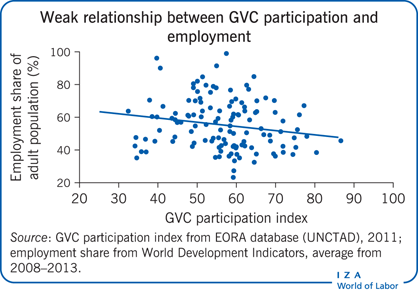Elevator pitch
Global value chains (GVCs) describe the cross-national activities and inputs required to bring a product or service to the market. While they can boost exports and productivity, the resulting labor market impacts vary significantly across developing countries. Some experience large-scale manufacturing employment, while others see a shift in demand for labor from manufacturing to services, and from lower to higher skills. Several factors shape the way in which a country’s labor market will be impacted by GVC integration, including the type of sector, lead firms’ strategies, domestic skills base, and the institutional environment.

Key findings
Pros
The employment effects of GVC integration are mixed in developing countries, with both winners and losers emerging in the process.
Labor market impacts go well beyond jobs and include changes in relative payoffs to skills, levels of inclusion, and skills development (upgrading) potential.
Some of the key determinants of labor market outcomes in GVCs are not within the control of domestic policy.
Women take a large share of jobs in labor-intensive chains, but lose out from upgrading.
Cons
In most high-income countries, higher-skilled workers gain in terms of rising wages, but lower-skilled workers experience greater job losses.
Countries with large labor surpluses and low wages have seen strong jobs growth following GVC integration.
Patterns across countries show that as sectors and countries upgrade, wages rise but net employment falls, and more skilled workers gain most.
Raising labor standards in GVCs appears to be a win–win proposition overall, with workers benefiting from improved conditions and firms experiencing productivity gains.